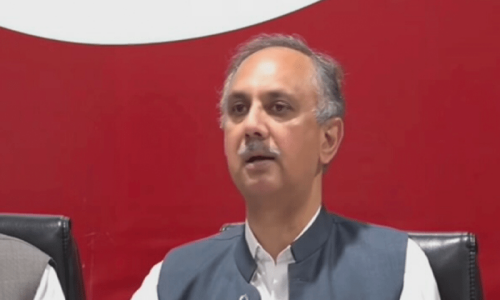IN response to Pakistan’s large external financing requirements, the governor of the State Bank of Pakistan (SBP) began a concerted campaign this summer to attract inflows from a segment of international fixed income investors that indulge in what are known as ‘carry trades’. These investors, typically highly leveraged hedge funds, borrow in currencies that have low (or negative) interest rates, and buy government securities in emerging markets that offer high interest rates. Since the targeted country’s currency can devalue/depreciate after the trade has been made, those countries that are on an IMF programme and where the external account has stabilised enough to minimise the risk of the exchange rate weakening and imposing a loss when converting back to US dollars, are considered most attractive.
This is where Pakistan comes into the picture. Since the governor’s foreign bank-arranged road show in July, Pakistan has received over $1 billion worth of inflows under this head. Looking at the yield differentials that Pakistani government securities offer, it is easy to see why. With the three-month London Interbank Offered Rate (Libor) at around 1.9 per cent, and the three-month Pakistan government Treasury bill offering an interest rate of around 13.6pc, the yield ‘pick up’ (or difference) is an astounding 11.7pc. (The borrowing cost in Swiss franc for a hedge fund investor would be around -0.75pc, magnifying the return even further).
Enhancing the return for these investors is the fact that the rupee has appreciated nearly 5pc since beginning July. Hence, a foreign fund manager who bought a three-month government of Pakistan T-bill in July would have made a gross return of around 16pc on this trade! This explains the near-gold rush appeal of Pakistani government securities for global fund managers. In a recent story on the subject in the Financial Times, the chief economist at Renaissance Capital, a large player in emerging markets, was quoted as saying that the case for buying Pakistan’s bonds was straightforward. “Where else can you get double-digit yield on an undervalued currency?” Indeed.
The central bank is ignoring significant potential risks.
Surely such a level of interest and actual inflows can only be a good thing? The prime minister has been misguided into believing so, tweeting his pleasure at the ‘investment’ in Pakistan. That is the first problem. These inflows of hot money are being mis-characterised as investment when in actual fact they represent very expensive, and very short-term, commercial borrowing for Pakistan. (For the foreign fund managers, this is portfolio investment. But from Pakistan’s perspective it is nothing more than expensive short-term borrowing). A more sensible alternate source of external market-based borrowing for the country would be issuing Eurobonds, sukuks and ‘panda bonds’, which would be longer tenor (five years and upwards) and at considerably lower cost. A raft of emerging market borrowers are taking advantage of favourable issuance conditions in the international bond market. If the government decided to take this route to raise around $3bn this year, it can shave over six percentage points off its borrowing cost in my estimation. This would translate into potential saving of around $200m every year (the equivalent Rs31bn annually).
So why is the SBP governor sold on this avenue of expensive borrowing for the country? For starters, as the IMF resident representative in Egypt, he is familiar with this approach, when the Fund nudged that country to attract large-scale inflows to rapidly boost its foreign exchange reserves. With domestic interest rates touching over 17pc at their peak, and the Egyptian pound stabilising under the IMF programme, Egypt managed to attract billions of US dollars into its onshore government securities market.
As a result, its forex reserves grew rapidly in a relatively short period of time. Both the SBP and the IMF are keen to replicate this rapid accumulation of Pakistan’s foreign exchange reserves, as this will not only meet set targets under the Fund programme but will boost the country’s external account buffers. In turn, this will set the stage for a turnaround in overall market and investor confidence. An additional benefit for the SBP is that such inflows are among the only source of generating rupee liquidity in the banking system after the preclusion of government borrowing from the central bank.
Despite these benefits, there are substantial risks and problems associated with these inflows of hot money. First is their fickle and volatile nature. They can, and have in the case of Mexico (peso crisis, 1994), Thailand (baht crisis, 1997), Russia (1998), Argentina (2001), to name a few episodes, caused disruption and upheaval in currency markets, asset markets, the domestic banking system, monetary management etc. by surging inflows as well as ‘bunched’ outflows. Even a recent IMF study (February 2019) admits that “the use of short-term debt has been associated with a higher incidence of financial crises in the past”.
Speculative carry traders are often highly leveraged and heavily dependent on borrowing, and are prone to sudden withdrawal from emerging markets due to abrupt changes in global risk appetite and/or decrease in availability of funding liquidity. Hence the term ‘hot’ money.
A second serious problem was pointed out in my column in Dawn in July this year (‘Anatomy of a crisis’). As the hot money book grows, and the SBP’s dependence on these inflows increases, the central bank will ‘lock’ itself into keeping domestic interest rates higher than they would be otherwise to ensure continued attraction for foreign fund managers.
The high interest rate policy, however, will discourage domestic investment, weigh the banking sector with potential bad loans, and impose a huge burden on public finances. Given that the government is slated to borrow several trillion rupees domestically in the current year in gross terms, a reduction of even a couple of percentage points in SBP’s policy rate can translate into an overall saving of around Rs400bn in debt-servicing cost. Clearly, the short-term benefits of SBP policy are being outweighed by very significant costs.
The writer is a former member of the prime minister’s economic advisory council, and heads a macroeconomic consultancy based in Islamabad.
Published in Dawn, December 6th, 2019
















































